Spiders are eight-legged creatures that bring a mix of emotions to different people. Some hate and fear them, while others find these arachnids fascinating.
No matter which group you belong to, you can find spiders in almost any place, including warm regions with tropical climates like Florida.
If you’re a Floridian, you might think most spiders in your area are poisonous. Well, it’s time to break that misconception and realize that some aren’t dangerous.
So, here are the thirteen types of spiders you can find in Florida, both native and non-native species.
Table of Contents
Native Species
1. Green Lynx Spider (Peucetia viridans)
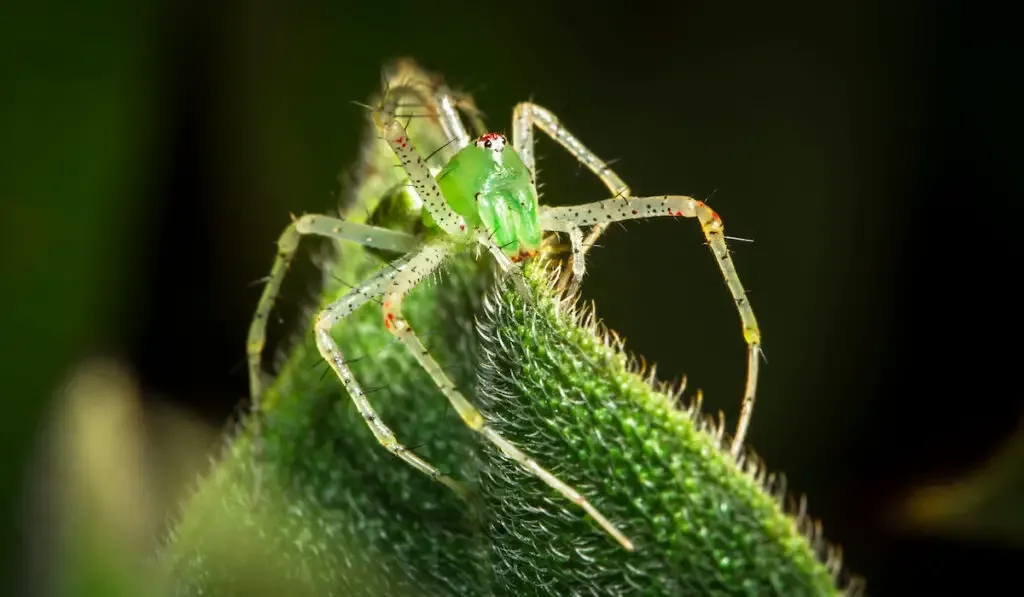
Green lynx spiders are native to Florida and other parts of the southern United States. They are also considered the largest North American lynx spider.
You can recognize Green Lynx spiders by their bright green bodies, yellowish-green long legs, and random red spots between their eyes and dorsals.
These spiders measure 0.5 to 0.9 inches long, and the females are larger than the males.
These spiders inhabit thick vegetation and low shrubs. They rarely bite humans. Instead, they only attack when hunting for insects.
2. Red Widow Spider (Latrodectus bishopi)
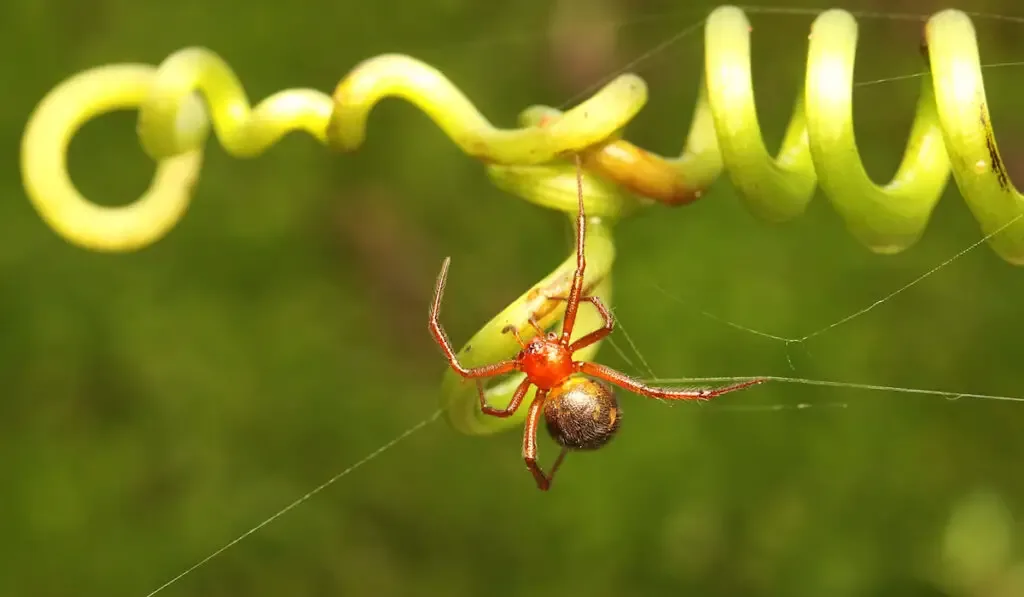
Red widow spiders are endemic to southern and central Florida. They inhabit dry areas covered with sand-pine scrubs.
Red widow spiders have black bodies with red dots and yellow borders. They also have bright reddish-orange heads, eyes, and legs. On average, red widow spiders measure 0.5 to 2 inches.
Female red widows are known for their dangerous bites that contain neurotoxins.
This toxin can induce muscle spasms. However, it is non-lethal and rarely causes death in humans.
However, it is still better for you to handle these spiders with care whenever you encounter them.
3. Sylvana Jumping Spider (Colonus sylvanus)
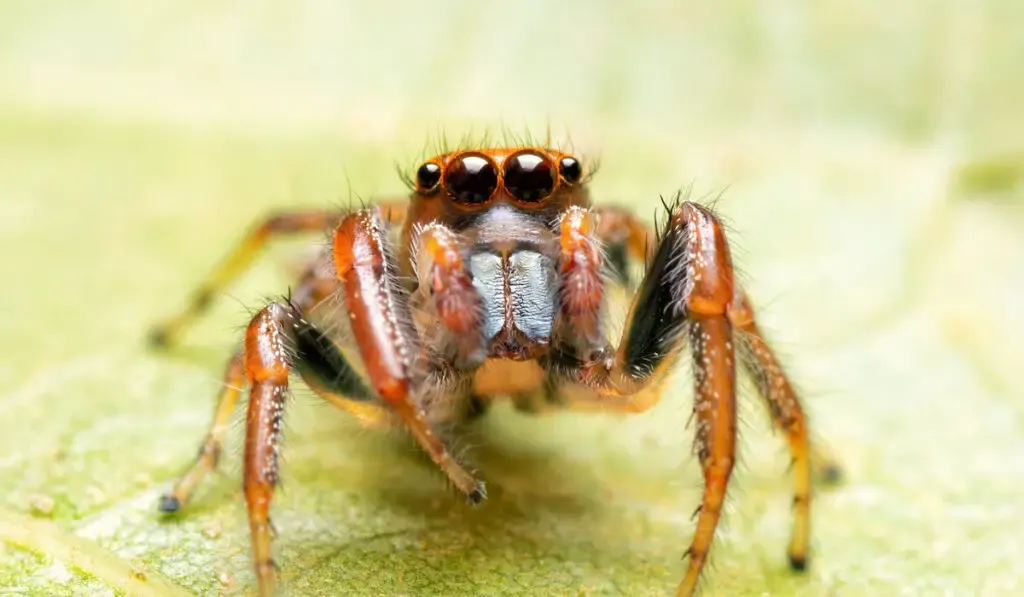
Sylvana jumping spiders are distributed in Panama and the United States. They also inhabit forested regions in Florida.
Sylvana jumping spiders measure 0.3 inches long. The males have blackish-maroon bodies with white stripes on each dorsal side. Meanwhile, female spiders have whitish-cream bodies with random white spots and stripes.
4. Florida Wolf Spider (Hogn georgicola)
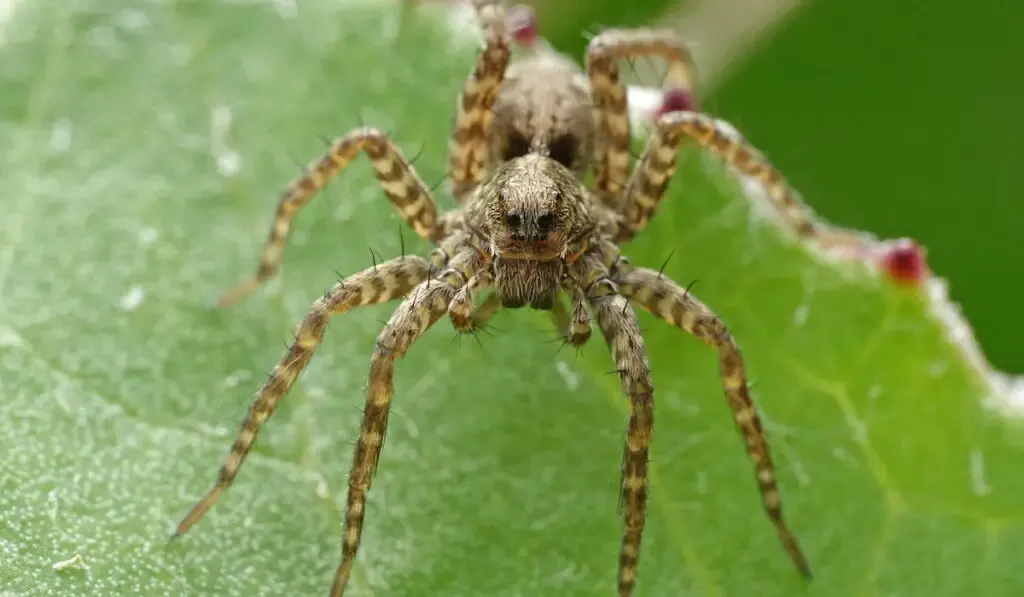
Wolf spiders are one of the most common arachnids in the United States. And you can find nine species of these spiders in Florida. But only Florida wolf spiders are native to Florida.
These spiders inhabit coastal forests, woodlands, shrublands, and alpine meadows. They measure 1 to 6 inches long.
You can recognize Florida wolf spiders by their chestnut or brown bodies, prominent dark eyes, and long legs.
From a glance, they resemble a brown recluse spider.
Florida wolf spiders are excellent hunters with sharp senses. And their large bodies don’t hinder their agility to chase down their prey.
5. Black Widow Spider (Lactrodectus mactans)
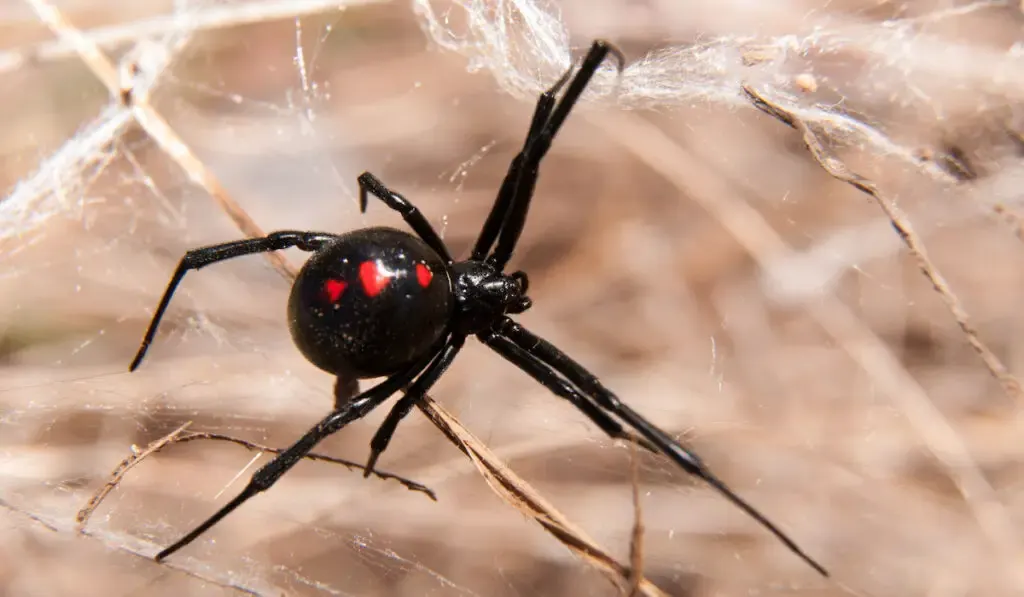
Black widow spiders are one of the deadliest arachnids in the world. The venom in their bites can cause severe harm and fatality to humans.
But these spiders only bite when they feel threatened. They rarely attack without any probable cause.
Black widows measure 0.25 to 1.5 inches long. They have rounded black bodies, small heads, and long legs. You can also spot striking red or brown hourglass markings on their back. Other species may have triangular marks or spots with the same color.
There are four widow species that are native to Florida. They are brown widow, red widow, Southern black widow, and Northern black widow.
6. Florida Garden Spider (Argiope florida)

Florida garden spiders or Florida argiopes are commonly found in woodlands and pinelands. These large spiders have whitish-grey bodies with irregular dark-orange yellow markings on the upper dorsals.
They also have bright to light orange legs with dark stripes. In addition, Florida garden spiders often create webs in a zig-zag pattern with a large cross in the middle.
Some researchers proposed that this pattern serves different purposes for these spiders.
For instance, it helps them to hide in plain sight, has a luring mechanism to attract prey, and even adds stability to the web structure.
7. Southern House Spider (Kukulcania hibernalis)
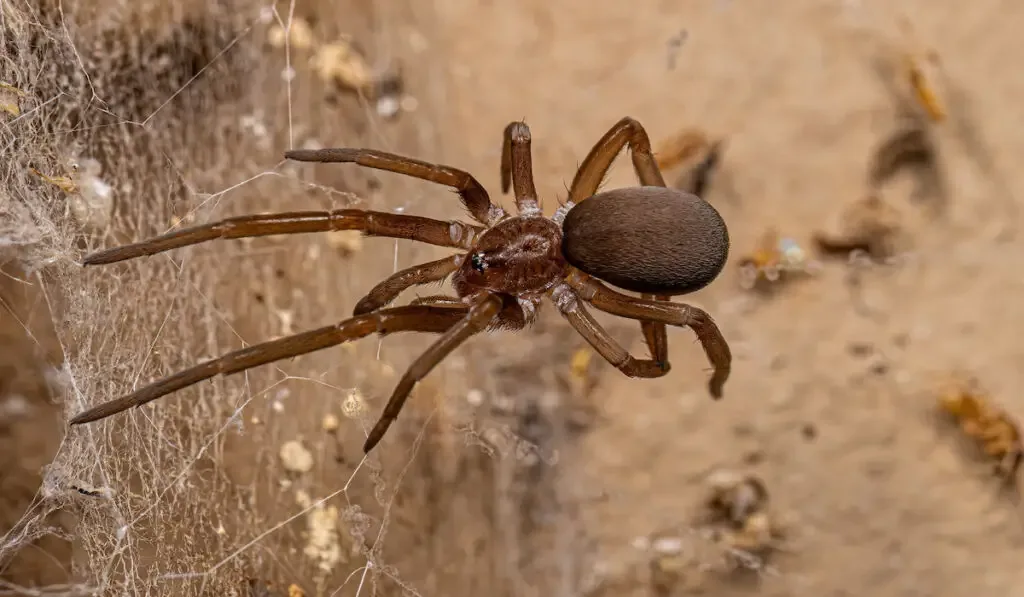
Southern house spiders are widely distributed in the Americas, the Caribbean, Argentina, Brazil, and Uruguay.
In addition, you can find them in the North, Central, and Southern regions in the United States.
Southern house spiders measure 2 inches long with the same body width. Male spiders have brown bodies and brown stripes near their eyes. Some people tend to mistake them for brown recluse spiders.
Meanwhile, the females have dark brown or black bodies. They also have shorter legs than the males. However, female spiders have rounder and larger bodies than male spiders.
Southern house spiders are natural pest controllers. They hunt and eat horse flies, beetles, house flies, and cockroaches.
8. Golden Silk Spider (Trichonephila clavies)
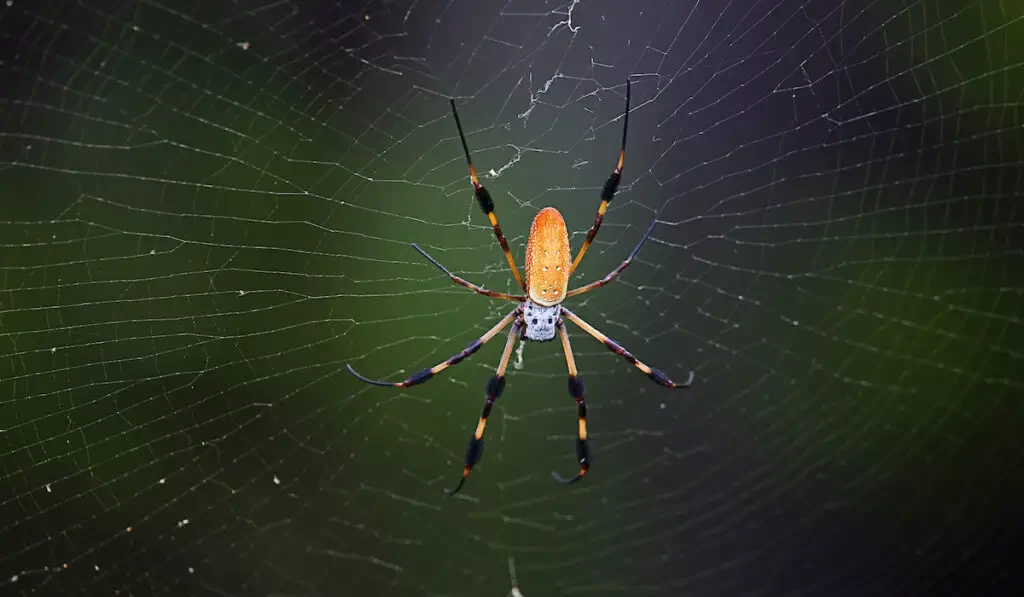
Golden silk spiders are native to the West Indies, parts of North America, and much of South America. In the United States, they live in the southern region, including Florida.
These spiders are also known as golden silk orb weavers and banana spiders. They inhabit dense forests, and woodlands and make their webs on trees and low shrubs.
You can recognize golden silk spiders by their brownish-yellow bodies and yellow legs with brown or black hairy bands. They also measure 1 to 2 inches long.
Golden silk spiders feed on insects such as bees, wasps, flies, moths, beetles, and butterflies. They are non-lethal species.
Most of the time, you will only experience minor soreness when these spiders bite you. And they won’t attack humans unless they feel threatened.
9. Spiny Orb Weaver (Gasteracantha cancriformis)
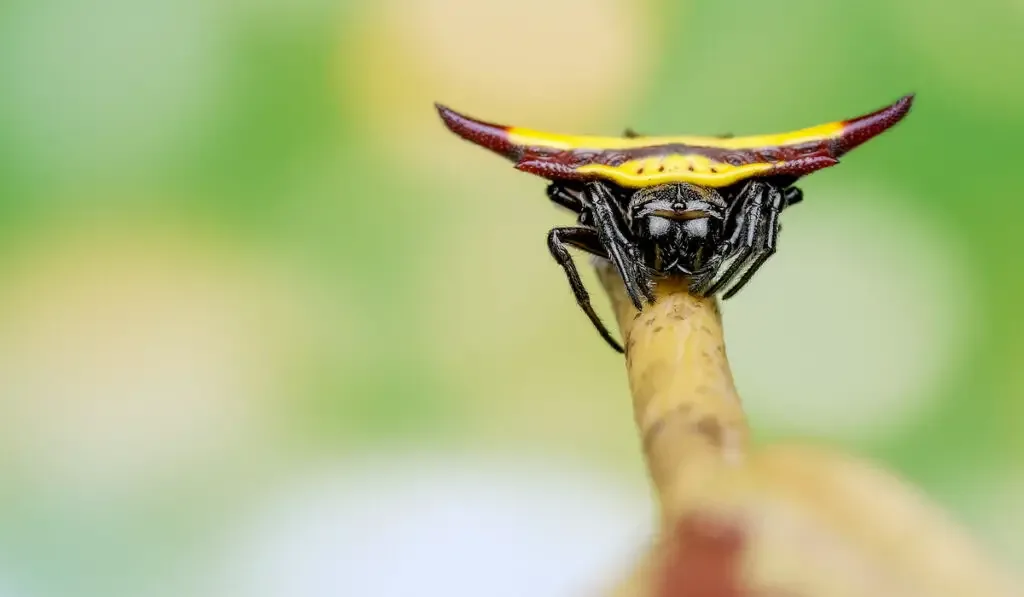
Spiny orb weavers are one of the common arachnid species in the United States. They are primarily distributed in the southern parts, including Florida and South Carolina. These spiders are also called crab spiders.
You can spot spiny orb weavers by the six protruding spines on their backs. Depending on where they live, these spiders have different spine colors.
For instance, the Florida weavers have white backs with black spots and red spines. Meanwhile, orb weavers in other regions have red, yellow, and orange backs with black spines.
Spiny orb weavers live on trees and shrubs near housing areas. They hunt insects like flies, beetles, moths, and mosquitoes.
10. Black And Yellow Argiope Spider (Argiope aurantia)
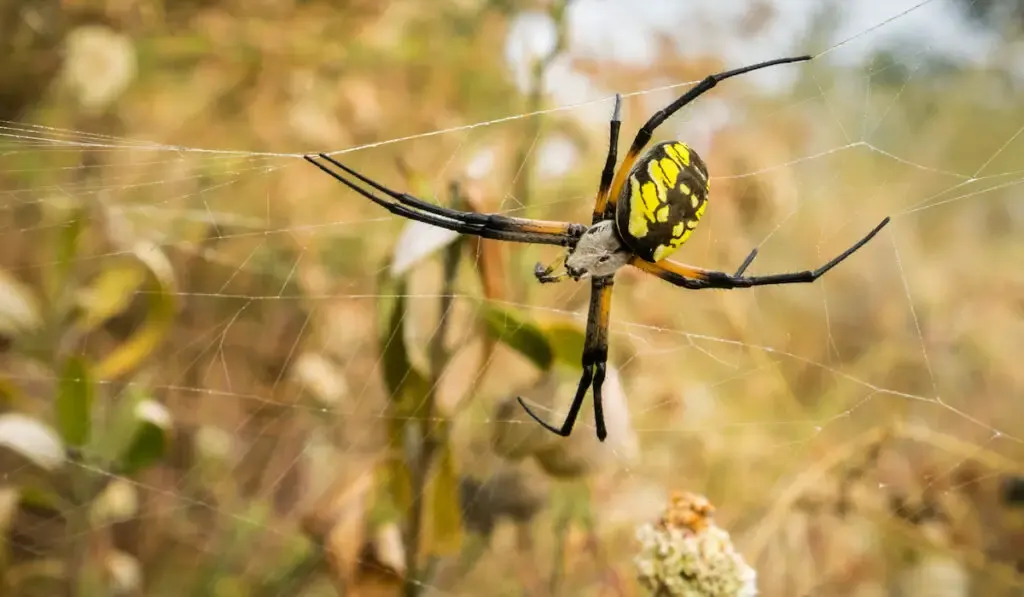
Black and yellow argiope spiders inhabit woodlands, forest edges, and areas with tall vegetation and buildings.
They are also known as writing spiders, yellow garden spiders, zipper spiders, yellow argiopes, and Steeler spiders.
These arachnids possess black and yellow bodies and legs and white cephalothorax. They measure 0.2 to 1.1 inches long. Female spiders are usually larger than males.
Black and yellow argiope spiders have distinctive webs with zig-zag patterns and unique central structures known as stabilimentum. This middle part helps them in luring their prey and acts as camouflage.
These spiders don’t attack without any provocation. Their bites are harmless and similar to the pain of being stung by bees.
Non-Native Species
11. Joro Spider (Trichonephila clavata)
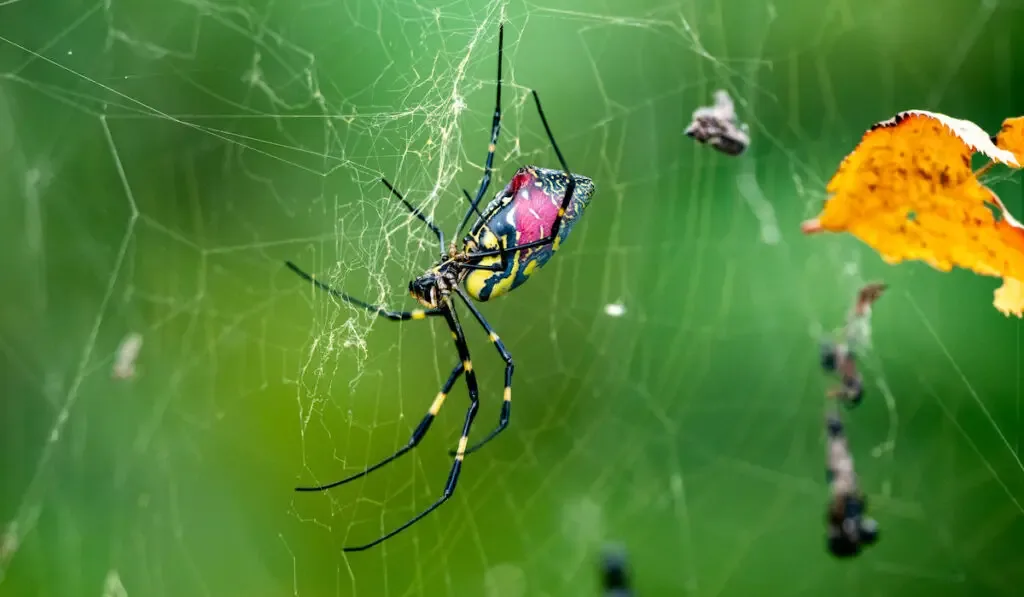
Joro spiders are native to Asia, particularly Japan, Korea, Taiwan, and China. However, these giant spiders were first discovered in the United States near Georgia and South Carolina.
Since then, they made their way to Florida by latching onto vehicles. What also makes Joro spiders unique is the “ballooning” mechanism they use when migrating.
This technique uses silks that help them move across the states, especially during the windy season.
You can spot male Joro spiders by their dull, brown bodies. Meanwhile, female Joros appear more vibrant with dark blue and yellow bodies. These spiders measure 0.3 to 1 inch long. And the females are larger than the males.
Although Joro spiders aren’t poisonous, they have powerful bites that can hurt and cause slight discomfort.
12. Pantropical Huntsman Spider (Hetaropoda venatoria)

Pantropical huntsman spiders are indigenous to Asia. They are also known as giant crab spiders and banana spiders. These arachnids are considered invasive in southern Florida, California, and Texas.
Pantropical huntsman spiders have woody-brown bodies with black spots on their legs and upper backs. These large spiders measure 1 to 3 inches long.
The easiest way to differentiate the males from females is by looking at their bodies and legs. For example, male spiders have longer legs, while females have larger bodies.
13. Brown Recluse Spider (Loxosceles reclusa)
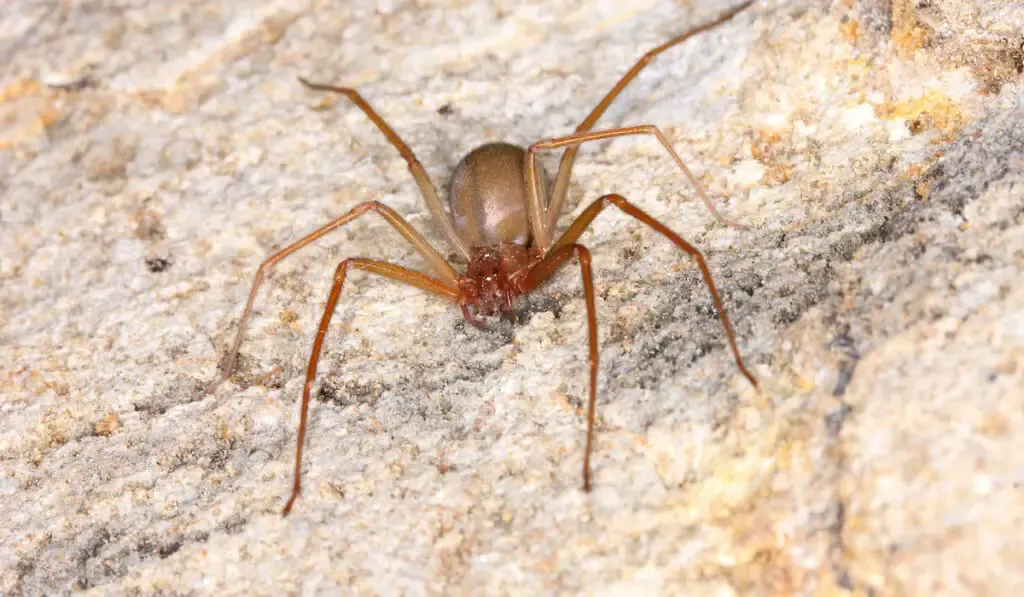
Brown recluse spiders are native to the Americas, specifically in the Midwestern and south-central United States.
However, they were introduced to many parts of Florida, including Leon, Jefferson, and Duval counties, and the Bay areas.
Brown recluse spiders possess brown bodies with violin-like shapes on their upper backs. On average, they measure 0.24 to 0.79 inches long.
Brown recluse spiders are venomous arachnids that can cause serious harm to humans. You won’t even notice if you’re bitten.
It may take up to 3 to 8 hours for you to notice that you’ve been bitten by a brown recluse spider.
This is when the irregular bluish patch will appear around the bitten area, leading to a necrotic lesion without instant medical treatment.
However, these spiders aren’t aggressive. They only bite when they feel threatened.
Final Thoughts
Spiders play a significant role in maintaining a balanced ecosystem.
However, they are considered pests when they start to become invasive. When their population grows, these arachnids can cause significant discomfort to homeowners, especially if they are poisonous.
If you experience any problems with spiders, seek help from professional pest controllers to mitigate this issue.
Resources
- https://entnemdept.ufl.edu/creatures/beneficial/green_lynx_spider.htm
- https://www.imagineourflorida.org/red-widow-spider/
- https://www.longleggedybeasties.com/2020/06/sylvana-jumping-spider/
- https://en.wikipedia.org/wiki/Colonus_sylvanus
- https://wildlifeinformer.com/wolf-spiders-in-florida/
- http://bransonswildworld.com/florida-wolf-spider-2/
- https://www.nationalgeographic.com/animals/invertebrates/facts/black-widow-spiders
- https://pestmax.com/spiders/common-types-of-house-spiders-found-in-florida-homes-that-bite-poisonous-black-widows-brown-recluses/
- https://uk.inaturalist.org/taxa/127353-Argiope-florida
- http://www.filmingflorida.com/daily-species/florida-garden-spider/
- https://entnemdept.ufl.edu/creatures/urban/spiders/southern_house_spider.htm
- https://www.inaturalist.org/taxa/122357-Kukulcania-hibernalis
- https://en.wikipedia.org/wiki/Trichonephila_clavipes
- https://entnemdept.ufl.edu/creatures/misc/golden_silk_spider.htm
- https://www.catseyepest.com/library/pests/spiders/spiny-orb-weaver-spider/
- http://www.wildsouthflorida.com/spiny-orb-weaver-spider.html
- https://en.wikipedia.org/wiki/Argiope_aurantia
- https://entnemdept.ufl.edu/creatures/MISC/SPIDERS/yellow-garden-spider.html
- https://en.wikipedia.org/wiki/Trichonephila_clavata
- https://www.firstcoastnews.com/article/news/local/what-is-a-joro-spiders-georgia-florida/77-2e0f0748-513a-4522-a1d0-38756d73ffab
- https://entnemdept.ufl.edu/creatures/urban/spiders/giant_crab_spider.htm
- https://a-z-animals.com/blog/where-are-brown-recluse-spiders-in-florida/
- https://entomology.ca.uky.edu/ef631

